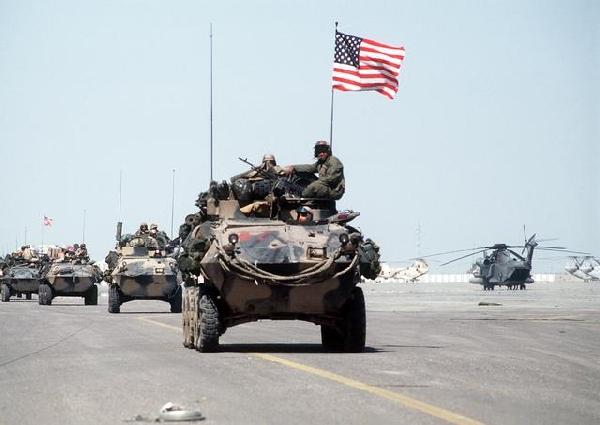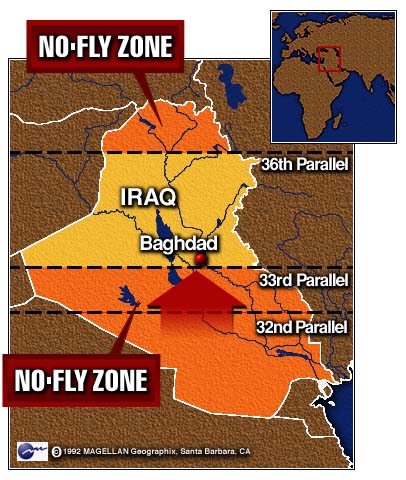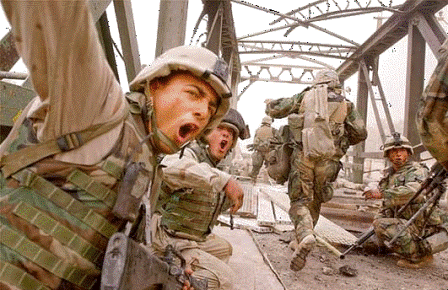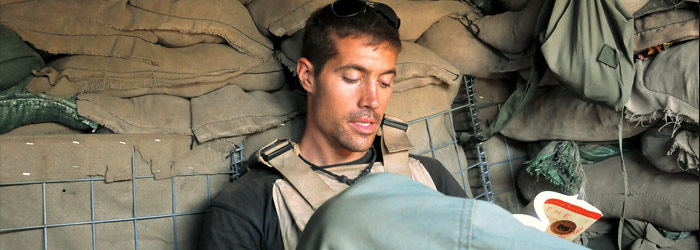A List of American-Iraq Wars and Conflicts
With America’s newest military intervention in Iraq (beginning with air strikes on August 7, 2014), to hold off the terrorist Islamic State forces, the U.S. has entered into the latest of several Iraq Wars.
If one were to create a list of such Iraqi-American conflicts, we would start with the attack on the USS Stark in 1987, and continue to the latest Iraq war in 2014 against the Islamic State.
Below is a listing, with detail and dates, of the several American wars in Iraq.
Attack on the USS Stark–May, 1987: During the Iran-Iraq War, the United States Navy patrolled the waters of the Persian Gulf in order to protect the right of ships (especially the precious oil tankers) to exercise free passage in international waters. On May 17, 1987, and Iraqi Dassault Mirage F1, launched two Exocet missiles at the American frigate USS Stark. The missiles hit the ship, causing 37 deaths and 21 wounded. The Iraqis claimed the attack was a mistake, a claim which the United States accepted. There was no American retaliation.
The Gulf War (1st Iraqi-American War)–1990-1991: When Iraq invaded Kuwait on August 2, 1990, the United States and many other nations sent troops to Saudi Arabia to defend the oil in the Persian Gulf kingdoms. Combat operations to drive the Iraqis out of Kuwait began on January 16, 1991. Iraqi forces were defeated, but many of Saddam Hussein’s elite units survived to put down Kurdish and Shiite rebellions. This Iraqi-American war is also referred to as Operation Desert Storm.
No-Fly Zone War (2nd Iraqi-American War)–1992-2003: After Saddam successfully crushed the ethnic rebellions, using deadly air-power to do so, the United States and the United Kingdom established No-Fly Zones over northern and southern Iraq in order to keep Saddam from abusing his own people. In addition, allied economic sanctions crippled the Iraqi economy, leading to serious shortages of basic staples in Iraq. The No-Fly Zones meant that any Iraqi aircraft that flew in the prohibited areas risked being shot down by American and British planes. During this time period, there were instances of severe allied bombings, such as Operation Desert Fox, which lasted for four days in December of 1998. This attack was in response to Iraq’s failure to cooperate with United Nations weapons inspectors and was designed to seriously degrade Iraqi military capabilities.
Iraq War (3rd Iraqi-American War)–2003-2011: Following the al-Qaida terrorist attacks on the United States in 2001, American pressure on Iraq increased. Worries about Saddam Hussein’s weapons programs prompted the U.S. to increase pressure on Iraq. In 2003, the U.S. launched Operation Iraqi Freedom to overthrow the Saddam regime. While the conquest of Iraq was relatively swift, American mistakes in setting up the occupation allowed resistance groups to form and separate Sunni and Shiite militias and terrorist groups fought against the U.S. and other coalition powers. The establishment of a new Iraqi government in 2006, led by Shiite politicians, decreased the Shiite rebellion, but led to increased alienation of the Sunni population. By the end of the American war in Iraq in 2011, most of the Sunni militias, including the Iraqi branch of al-Qaida had been largely decimated, some of these groups would later form what would become known as the Islamic State of Iraq and al-Sham (referred to in western media as ISIS and/or ISIL).
Islamic State War (4th Iraqi-American War)–2014: With the growth of the Islamic State forces, which also play a significant role in the Syrian Civil War (2011-Present), Sunni disaffection with the Shiite administration of Prime Minister Maliki had an outlet. Drawing recruits from the Sunni populations of Syria and Iraq (ISIS fought both governments simultaneously), as well as from Sunni Muslim populations world-wide, the leader of ISIS, Abu Bakr al-Baghdadi, declared a new Islamic State, or Caliphate, that he said would unite Muslims. The new Islamic State considers anyone not of their brand of Sunni Islamic faith to be infidels and apostates. As such, the Islamic State has committed atrocities against non-Muslim populations in both Syria and Iraq. Massacres of Arab Christians, Yazidis, Turkmen, Kurds, and Shiites have been reported.
In order to prevent the Islamic State from gaining more ground, and to “protect Americans in Iraq,” President Obama declared that the U.S. military would conduct airstrikes on the Islamic State forces. Those attacks began August 7, 2014.
The Islamic State released a video showing the beheading of American reporter James Foley, who they had captured prior to the American attacks. As later reported, U.S. Special Forces had conducted a raid in strength on an Islamic State base near Raqqah, Syria in July in a failed attempt to rescue Foley. Following the beheading of James Foley, American popular opinion, as well as the rhetoric from U.S. government sources indicate the possibility of further American intervention in the war against the Islamic State.




